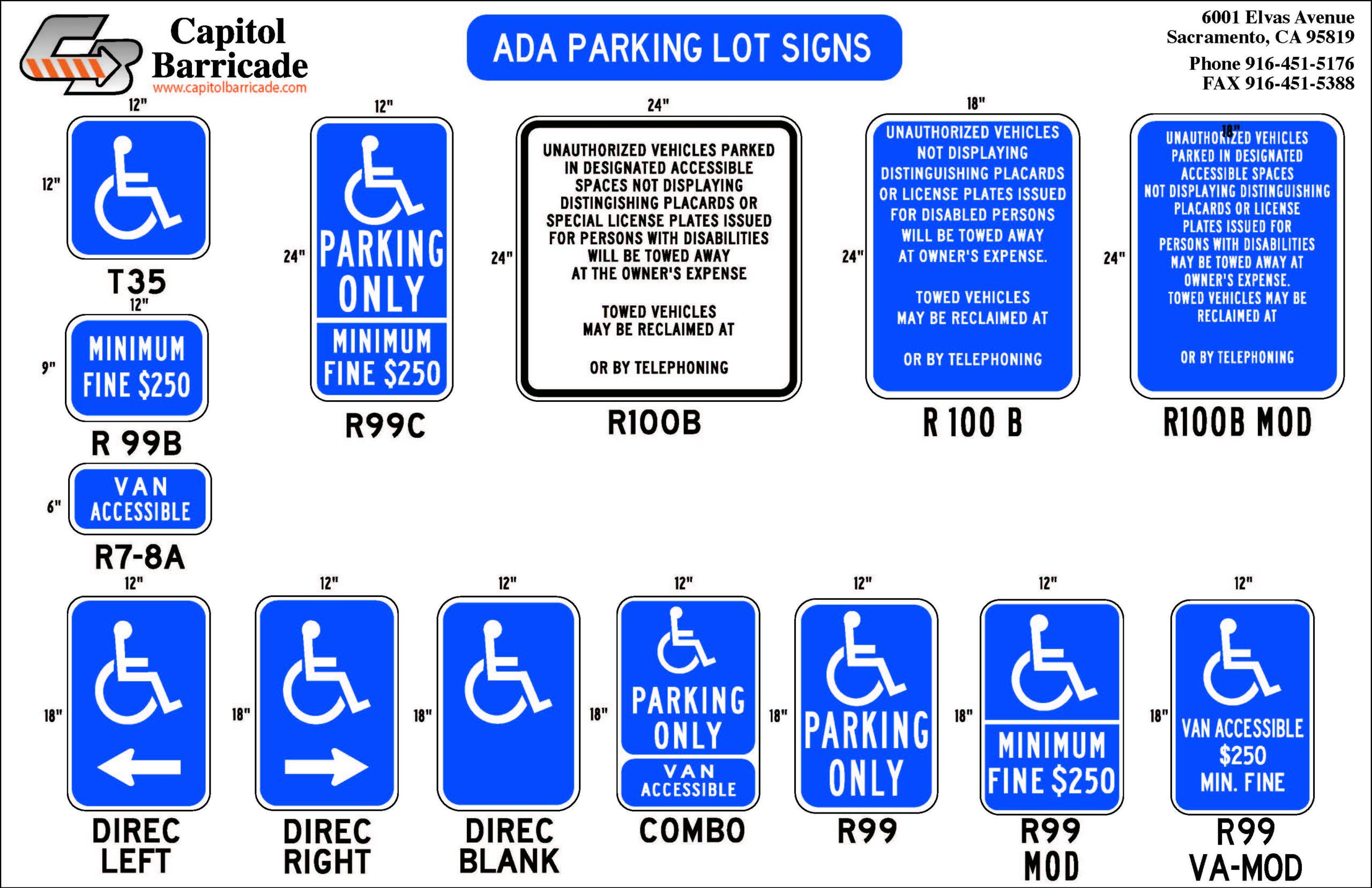How ADA Signs Improve Ease Of Access for Everyone
How ADA Signs Improve Ease Of Access for Everyone
Blog Article
Checking Out the Key Functions of ADA Signs for Improved Availability
In the world of availability, ADA indications work as quiet yet effective allies, guaranteeing that spaces are navigable and inclusive for people with impairments. By integrating Braille and tactile elements, these indications break barriers for the aesthetically impaired, while high-contrast color pattern and clear font styles accommodate diverse aesthetic needs. Their calculated positioning is not arbitrary yet instead a calculated initiative to promote seamless navigating. Yet, beyond these attributes exists a much deeper narrative concerning the development of inclusivity and the recurring commitment to developing equitable rooms. What extra could these signs indicate in our quest of universal access?
Relevance of ADA Conformity
Making certain conformity with the Americans with Disabilities Act (ADA) is critical for cultivating inclusivity and equal accessibility in public areas and work environments. The ADA, enacted in 1990, mandates that all public centers, employers, and transportation solutions suit people with impairments, ensuring they appreciate the same legal rights and opportunities as others. Conformity with ADA criteria not just fulfills legal responsibilities however additionally boosts an organization's credibility by demonstrating its dedication to variety and inclusivity.
One of the crucial elements of ADA compliance is the application of easily accessible signage. ADA signs are designed to make certain that people with impairments can easily browse with buildings and spaces.
Moreover, sticking to ADA laws can alleviate the danger of potential penalties and lawful consequences. Organizations that fail to follow ADA standards may deal with lawsuits or fines, which can be both destructive and monetarily burdensome to their public picture. Thus, ADA conformity is essential to cultivating an equitable setting for everyone.
Braille and Tactile Components
The unification of Braille and tactile components right into ADA signs embodies the principles of availability and inclusivity. It is typically put underneath the equivalent message on signs to ensure that individuals can access the information without visual support.
Responsive components expand past Braille and consist of increased characters and symbols. These parts are made to be noticeable by touch, enabling individuals to identify room numbers, washrooms, exits, and other crucial areas. The ADA sets particular standards relating to the dimension, spacing, and positioning of these responsive components to enhance readability and make sure consistency across various settings.

High-Contrast Shade Schemes
High-contrast shade plans play a pivotal function in enhancing the presence and readability of ADA signage for people with visual problems. These plans are important as they optimize the difference in light reflectance between message and background, making certain that indications are easily noticeable, even from a range. The Americans with Disabilities Act (ADA) mandates making use of details color contrasts to suit home those with minimal vision, making it an essential aspect of conformity.
The efficiency of high-contrast shades hinges on their capacity to attract attention in different lighting conditions, consisting of dimly lit atmospheres and locations with glare. Commonly, dark text on a light history or light message on a dark background is utilized to attain optimal contrast. Black text on a yellow or white history provides a plain aesthetic distinction that aids in quick acknowledgment and understanding.

Legible Fonts and Text Size
When thinking about the style of ADA signage, the choice of clear font styles and suitable text size can not be overemphasized. The Americans with Disabilities Act (ADA) mandates that typefaces need to be sans-serif and not italic, oblique, script, highly attractive, or of uncommon type.
The size of the message additionally plays an essential function in ease of access. According to ADA guidelines, the minimal message height ought to be 5/8 inch, and it ought to increase proportionally with watching range. This is especially important in public rooms where signage requirements to be read promptly and precisely. Consistency in message dimension adds to a cohesive aesthetic experience, helping people in browsing environments successfully.
In addition, spacing between letters and lines is important to legibility. Appropriate spacing avoids personalities from appearing crowded, boosting readability. By adhering to these requirements, designers can dramatically enhance accessibility, making sure that signage offers its intended objective for all individuals, despite their visual capacities.
Effective Positioning Methods
Strategic link positioning of ADA signs is essential for maximizing availability and making sure conformity with lawful criteria. ADA guidelines state that indicators should be installed at an elevation between 48 to 60 inches from the ground to guarantee they are within the line of view for both standing and seated people.
Furthermore, indications should be positioned surrounding to the latch side of doors to allow simple recognition prior to entrance. This placement helps people find areas and spaces without obstruction. In situations where there is no door, indications should be situated on the closest surrounding wall. Consistency in sign positioning throughout a facility boosts predictability, decreasing complication and improving total user experience.

Conclusion
ADA signs play an important function in promoting ease of access by integrating features that deal with the needs of individuals with disabilities. These elements jointly cultivate a comprehensive atmosphere, highlighting the significance of ADA compliance in guaranteeing equal accessibility for all.
In the world of availability, ADA indicators serve as quiet yet effective allies, making sure that areas are navigable and inclusive for individuals with disabilities. The ADA, established in 1990, mandates that all public centers, employers, and transportation solutions company website fit individuals with disabilities, guaranteeing they enjoy the very same legal rights and chances as others. ADA Signs. ADA signs are designed to make certain that people with specials needs can quickly navigate through areas and buildings. ADA guidelines stipulate that signs need to be placed at an elevation between 48 to 60 inches from the ground to ensure they are within the line of view for both standing and seated people.ADA indicators play an essential duty in promoting ease of access by integrating functions that resolve the demands of individuals with disabilities
Report this page